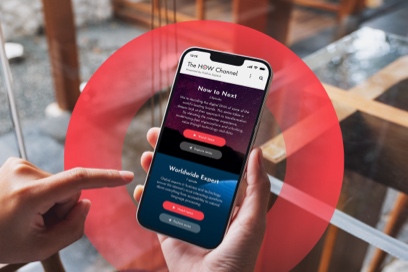A successful B2B marketplace requires more than just creating an online store. Businesses must first outline their business case, operating model and competitive risks.
Once this strategy is in place, they must answer several key questions:
- Which players in the ecosystem should be part of the marketplace?
- What are the customer journeys for these players?
- How will data be shared and governed?
- How can the marketplace minimize friction among competitors?
Choosing a B2B marketplace business model
There are two main B2B marketplace business models: selling products on another operator’s marketplace (third-party marketplace) and operating your own marketplace (first-party marketplace).
Depending on your business’s resources and ability to drive demand, each business model offers unique benefits and risks.
The benefits of participating in a third-party B2B marketplace
There are many benefits to participating in a B2B marketplace, even if you have overlapping products with other sellers. For example:
- Provide access to a sizable up-front audience with minimal effort
- Can be easier and cheaper than launching a localized direct site
- Marketing and sales costs are handled by the marketplace
- The marketplace owner is responsible for infrastructure or transactions
Of course, there are also some risks associated with participating in a marketplace:
- Losing control of your brand, or undermining competitive positioning
- Turning your products into a commodity
- Unfavorable commissions, fees, margins
- Losing control of your customer data
However, the benefits of participating in a marketplace can outweigh the risks, especially if you have a well-defined strategy and a strong team in place.
How to mitigate the risks of participating in a third-party B2B marketplace
There are also a number of things you can do to mitigate the risks of participating in a marketplace, such as:
- Choose a marketplace that is well-established and has a strong reputation
- Conduct research on the other sellers who will be participating in the marketplace
- Develop a clear pricing strategy that takes into account the competition
- Invest in marketing and advertising to drive traffic to your website or store
One of the most important strategies to mitigate risks in third-party B2B marketplaces is through partnerships and relationships with other sellers. The first step is sharing data and insights with competitors in a way that protects your own business advantage.
The benefits of building a B2B marketplace
While participating in a third-party marketplace requires less up-front investment, there are many benefits to building a first-party B2B marketplace.
The benefits:
- Control of customer experience and data to use for test-and-learn automation
- Avoidance of channel conflict with retailers/distributors
- Ease of integration with loyalty programs
- Commission and expanded product catalog from third-party partners
There are also a fair number of risks that come along with building and running a first-party marketplace.
The risks:
- Significant development efforts and increased liability
- Requires additional ongoing investment to operate, market and maintain
- Must drive traffic to build a base of buyers and recruit sellers
- Vendor and customer loyalty can be difficult to achieve as the B2B landscape becomes more competitive
How to build a B2B marketplace
Step 1: Identify the needs of your customers
In today's digital age, businesses want self-service options for purchasing just like consumers. Even in a B2B marketplace, where products and services are more complex, businesses want the same level of self-service options that B2C customers have. There are various options for B2B companies, including providing the services and products themselves or partnering with other companies to provide them. Acquiring companies that already provide these services is also an option.
However, the process starts with identifying the needs of customers and finding ways to provide the products and services that meet those needs. In general, there are two critical needs that B2B customers have when it comes to marketplaces. The first is trust in the brand and the company's ability to deliver. In mission-critical jobs, such as delivering fresh groceries across the country, reliability and trust are essential. The second need is a seamless and intuitive user experience. The right technologies must enable business leaders to interact and get the key qualities they need, exactly when they need them.
Step 2: Identify marketplace partners to fulfill customer needs
The process of creating the marketplace begins with identifying the different types of products or services that customers require based on market research. The company then has to identify the competencies and capabilities required to deliver these services.
Once the competencies are identified, the operator company needs to search for partners that can fulfill these needs, including both internal and external manufacturers and service providers that can enter as sellers on the marketplace. The goal is to create a pool of sellers who could offer a wide range of products or services to customers.
It’s important to then set up governance and define ways of working, analyze the current distributors and suppliers and agree on contracts.
Step 3: Create the marketplace infrastructure
Next, the operator needs to create the digital infrastructure for the marketplace, identifying current pilot technology vendor retailers. This may include building a website and app that would allow customers to access the marketplace and directly purchase products or book services. The operator also needs to create a system for managing the providers and their products and services, as well as a payment system for customers to transact.
Marketplace architectural components enable the marketplace ecosystem, but they must be carefully tuned. It’s important to create a marketplace prototype with customer journeys to test with real customers and iterate based on initial data gathered to optimize the experience ahead of scaling. The operator also needs to determine the KPIs or B2B marketplace metrics before delivering the first launch of the pilot. Change management should also be carefully considered in planning phases to identify areas where the capability will need support and where new processes will be needed—or existing ones augmented—to orchestrate cohesion under the new business model. Expect that team structures will evolve over time as the marketplace lifecycle matures.
Step 4: Launch the marketplace
The launch of the marketplace is critical as the operator has to ensure that the marketplace is marketed effectively to customers, both existing and potential, to generate interest and drive traffic to the site. The company also has to onboard the service providers and ensure that they understand how the marketplace works and how to use it effectively.
It’s best to execute high-value and complex requirements first in agile sprints to deliver a phase one pilot for specific customers or regions before rolling out an optimized pilot to all markets.
Step 5: Monitor marketplace performance
Finally, the company has to monitor the marketplace's performance and make adjustments as necessary. This involves collecting and analyzing data on customer usage, seller performance and marketplace revenue. By tracking these metrics, the operator can identify areas for improvement and make changes to increase the marketplace's effectiveness and profitability.
As the B2B marketplace space evolves, the industry player that attracts the most critical mass will establish itself as a leader, not only in transactions but also as a collector of customer data and insights that can lead to new offerings.
Companies should be prepared for their team structures to evolve over time as the marketplace transitions from launch to expansion to maintenance and long-term growth.
The B2B marketplace solution
Unlike other platform partners, Publicis Sapient helps B2B consumer products firms build marketplaces from strategy to implementation. We stitch together commerce, order management systems and marketplace platforms to create industry-leading solutions that scale.
Publicis Sapient's expertise in B2B marketplace development
Publicis Sapient has a global center of excellence in building and managing B2B marketplaces and have helped businesses of all sizes create and scale marketplaces in the consumer products industry.
Our team of experts has the experience to help you:
- Define your business case and operating model
- Identify the right players for your marketplace
- Design a customer-centric experience
- Integrate commerce, order management and marketplace platforms
- Minimize friction among competitors
To learn more about which B2B marketplace solution may be right for you, or to explore how a B2B marketplace can benefit your business:
Visit our B2B Digital Transformation Hub
Start a Conversation














